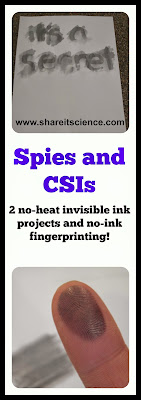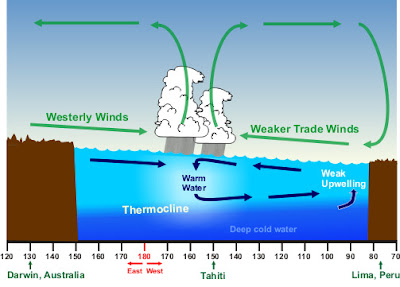This first full year of blogging has been a great experience. With each post I learn a little more about the process, and it is certainly exciting to see more and more people visiting the page! Here are the top 5 most popular posts from Share it! Science News this year. They are almost all activity-based, in fact 2 are from my series, "Saturday Science Experiment", which tells me I need to focus on writing more of this type of post in the future!
#1 Saturday Science Experiment: The Hidden Colors in a Leaf
This is an experiment that can be done at school or at home, throughout different parts of the year. Through the process of chromatography, you can see the different pigments in the leaves! I have KC Edventures to thank for the widespread popularity of this post, as it was featured on their post: 20 Awesome Outdoor Fall Activities.

#2 Saturday Science Experiment: Spies and CSIs
This was one of my favorite posts to put together this year, and it has been very popular. There are 2 tutorials for invisible ink- neither require heat, as well as a no-ink fingerprinting activity!
#3 Children's STEAM Festival: Family STEAM Night- Where Art Meets Science!
This post is great for schools who want to host a Family Science Night, or for those who like to do family-friendly science activities at home. We're putting Art into the mix of traditional STEM to make STEAM (Science, Technology, Engineering, Art, Mathematics). Catapult painting, calculating angles of gigantic snowflakes, bubble painting, DNA models and more!
This was part of a series called Children's STEAM Festival, a partnership between Share it! Science News and Growing with Science. If you like this post, be sure to check out the others in the series!
#4 Grow a Themed Flower Garden with Your Children
A very popular post in the spring of 2015. Ideas for growing themed rainbow or butterfly gardens with children. Definitely one to bookmark or pin for when warmer weather comes! It's never to early to get planning!
#5 Pirate Science! Fool's Gold, Parrots and Shipwrecks
I wrote this post as part of Peakle Pie's "Talk Like a Pirate Day" Blog Hop. I love pirate lore and science, so it seemed like a natural fit! Kids activities for testing your rock collection for gold, some parrot science and research and info on fascinating shipwrecks. ARHHHH!
Did you like these activities? Don't miss any more Share it! Science News posts! Subscribe by e-mail on the right-hand sidebar. We never send anything spammy, just science fun!
Check out our Pinterest Boards too!





























